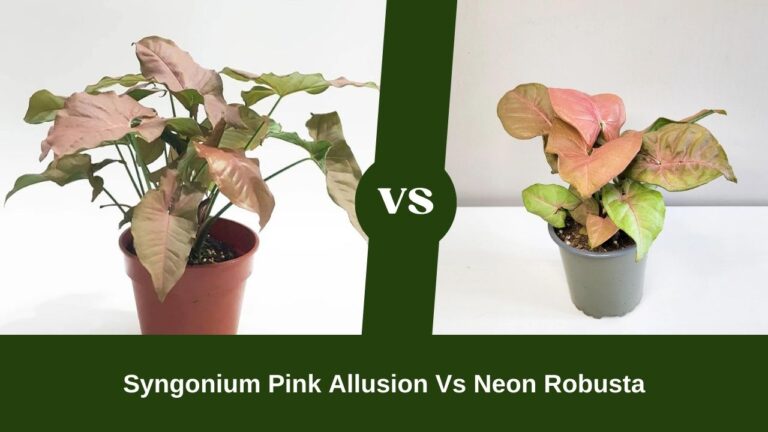A Detailed Syngonium Milk Confetti Care Guide

Navigating the diverse needs of various plant varieties can be daunting, particularly for those with busy lifestyles. Enter the Syngonium Milk Confetti, a captivating foliage gem that offers a stunning visual presence alongside remarkable ease of care.
Bright, indirect light is key for your Milk Confetti! Avoid direct sun. Water when the top inch of soil dries out, and aim for comfortable room temperatures (60-75°F). Bonus points for some extra humidity!
Keep on reading the article for an in-depth handbook for Syngonium Milk Confetti care.
Table of Contents
How to Take Care of Syngonium Milk Confetti?
I’ll try to talk about all the Syngonium Milk Confetti caring tips here. I’ll consider their environmental requirement, fertilizer, and water needs as well. Let’s take a look!
What Environment Does This Plant Prefer?
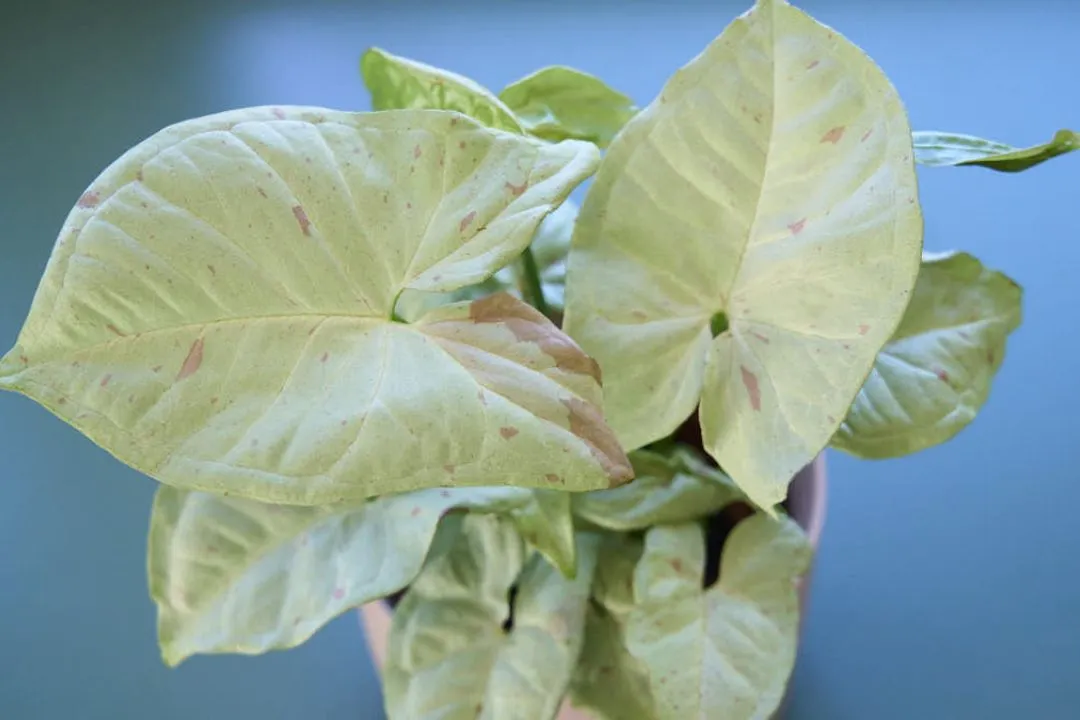
Like many tropical plants, Syngonium Milk Confetti loves bright, indirect light. Direct sunlight can scorch those lovely leaves. An east or west-facing window is often perfect.
Aim for temperatures between 60-75°F and high humidity around 50-70%. Misting the leaves frequently helps replicate its native rainforest habitat.
How Often Should I Water My Milk Confetti?

This plant likes its soil to dry out slightly between waterings but not become bone dry. Check the top few inches of soil and water thoroughly when they begin to feel dry to the touch.
Drain any excess to prevent soggy soil that can lead to root rot. During winter’s dormant period, allow the soil to dry out more between waterings.
What Type of Soil is Best?
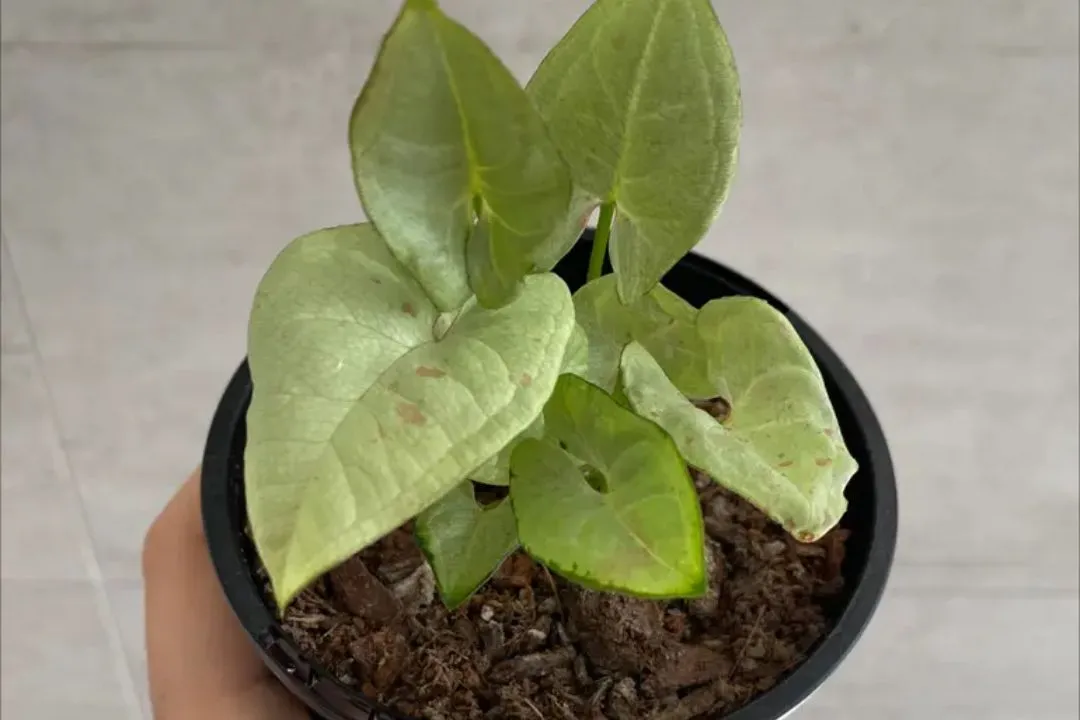
A well-draining potting mix rich in organic matter, like peat moss or coir, provides the perfect base. Adding perlite or orchid bark helps ensure good aeration and drainage that Syngonium craves. A slightly acidic to neutral soil pH around 6.0-7.0 is ideal.
Fertilizing Your Syngonium Milk Confetti
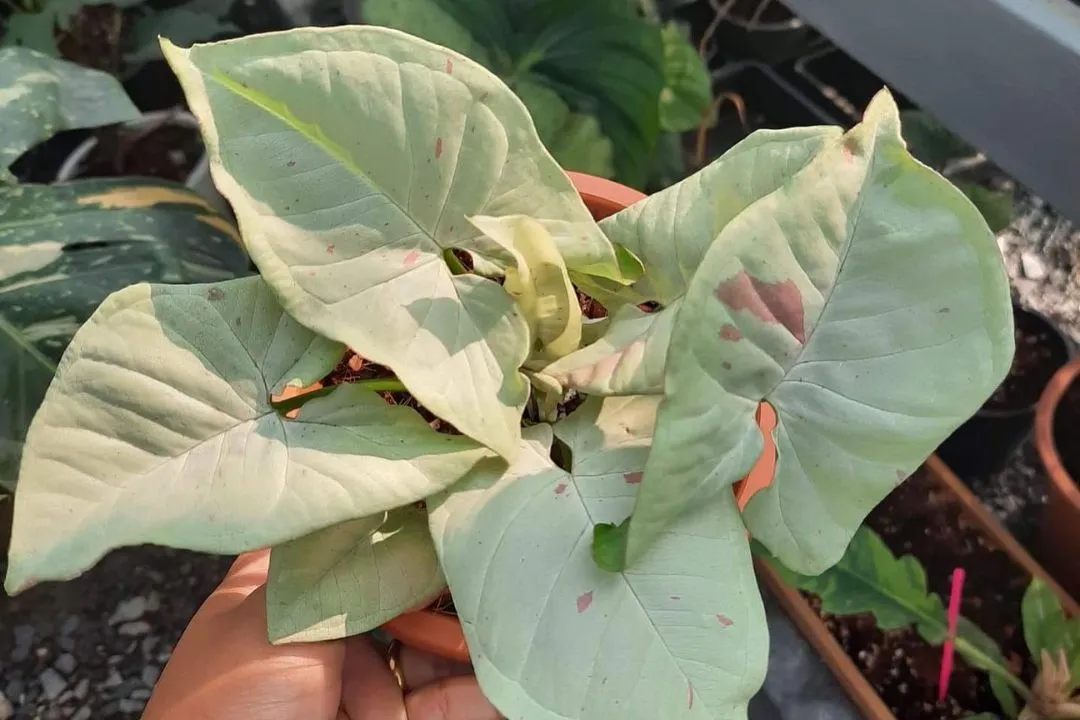
Just like most houseplants, it thrives on regular feeding during its active growing season (spring and summer). You can choose between two options.
- Liquid Feast: A balanced liquid fertilizer applied every 4-6 weeks will keep your plant happy.
- Slow and Steady: For a more hands-off approach, add slow-release pellet fertilizer once in early spring.
Wintertime is for Resting: Remember to ease off or completely stop fertilizing during the winter months when your Milk Confetti isn’t growing as actively.
How to Propagate Syngonium Milk Confetti? Step By Step Process
Here’s how to propagate Syngonium Milk Confetti plants.
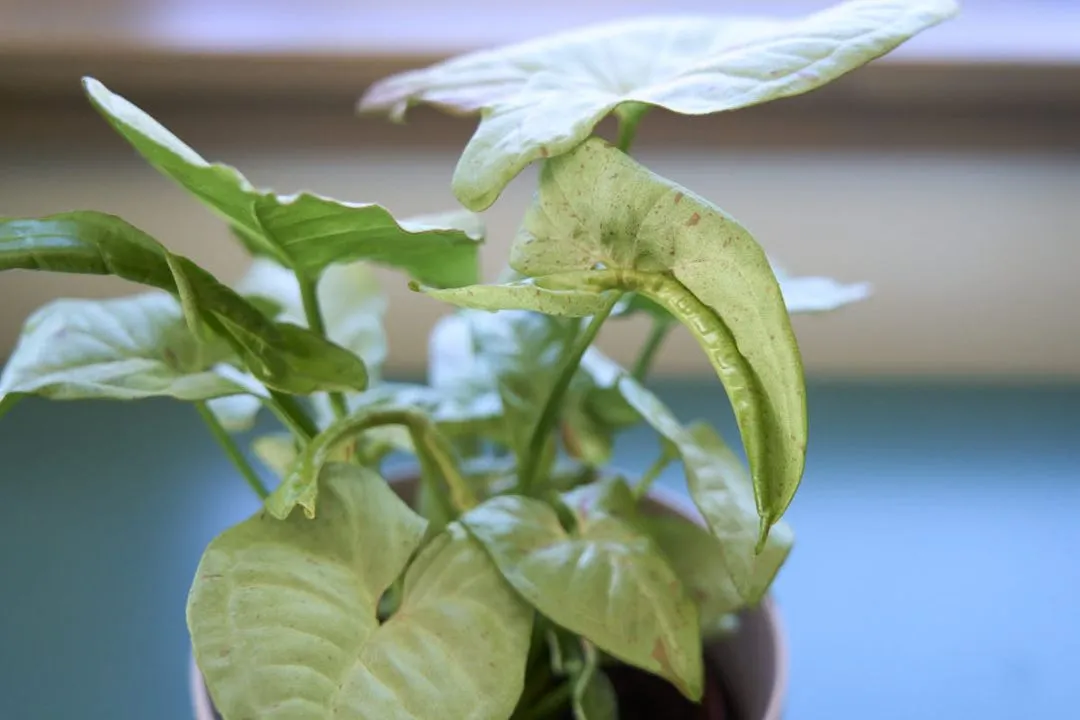
- Snip a Healthy Vine: Find a healthy stem on your Milk Confetti that’s at least 4-6 inches long and has a few leaves.
- Make a Clean Cut: Use sharp scissors or pruners to cut the stem just below a leaf node (the little bump on the stem where a leaf grows).
- Prep the Cutting: Gently remove the bottom leaves from the stem, leaving just the top few. This allows the plant to focus its energy on root growth.
- Water or Soil? You Choose! Now you have two options:
- Water Propagation: Place the stem in a jar of clean water, making sure the leaf node is submerged. Keep an eye on the water level and change it every few days to prevent bacteria growth.
- Soil Propagation: Plant the stem directly into a pot with a well-draining potting mix. Make sure the soil is moist but not soggy.
Whichever method you choose, be patient! It can take a few weeks for roots to start forming. Once the roots are well-established (around an inch or two long), you can treat your new Milk Confetti cutting like a regular houseplant!
Are Syngonium Safe for Pets?
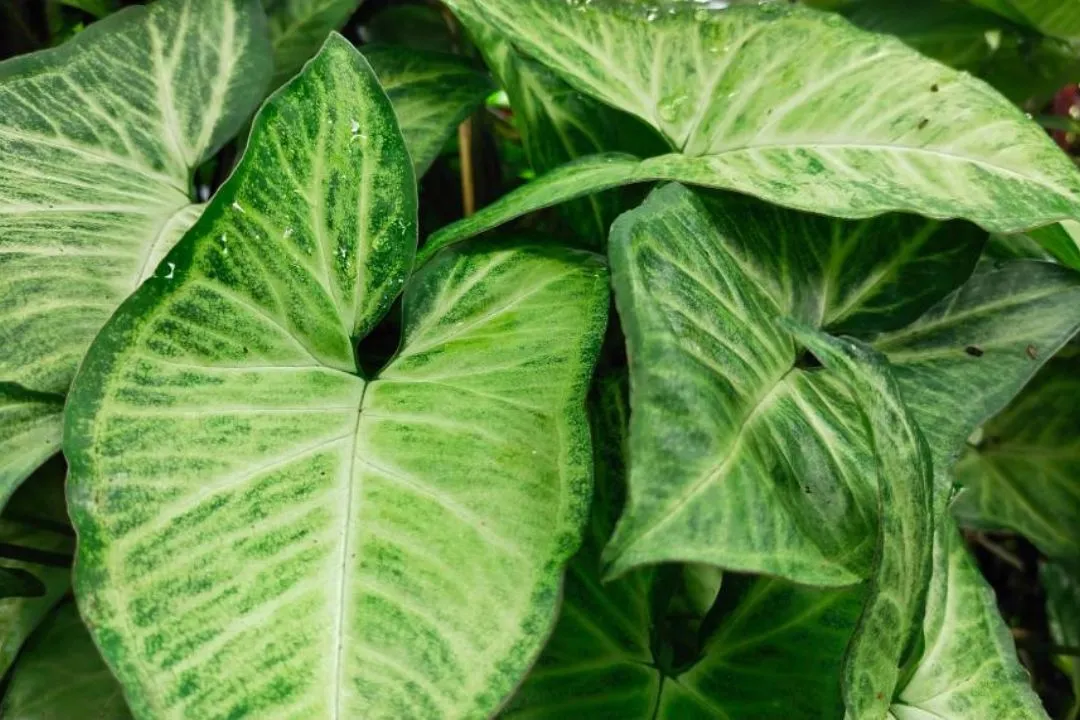
No, unfortunately Syngonium, which includes Milk Confetti, is not safe for pets. These plants contain insoluble calcium oxalate crystals which can irritate your pet’s mouth, tongue, and throat if ingested.
Symptoms of Syngonium poisoning in pets include.
- Oral irritation, pain, and swelling of the mouth, tongue, and lips
- Excessive drooling
- Difficulty swallowing
- In rare cases, difficulty breathing due to swelling
If you suspect your pet has eaten any part of your Syngonium, it’s important to contact your veterinarian or animal poison control center right away.
FAQs
Have a look at the following Q&A. I hope this might help you.
Q: Why are my Syngonium’s leaves turning yellow?
Yellow leaves can be a sign of overwatering, underwatering, or nutrient deficiency. Adjust your watering schedule and consider applying a balanced fertilizer. If the issue persists, check for pests or diseases.
Q: How do I prevent pest infestations on my Syngonium?
Regular inspections and quarantining of new plants can help prevent pest infestations. Treat any infestations promptly with insecticidal soap or neem oil. Maintaining proper growing conditions can also help deter pests.
Q: Why are my Syngonium’s leaves curling or developing brown spots?
Curling leaves can indicate underwatering or low humidity, while brown flecks may be caused by too much direct sunlight, low humidity, or fungal diseases. Adjust your care routine accordingly and address any environmental issues.
Conclusion
The Syngonium Milk Confetti, with its captivating speckled leaves, is a true gem for any plant enthusiast. Easy on the eyes and even easier to care for, this beauty thrives with bright indirect light, regular watering, and the occasional trim.
For those looking to expand their collection, propagation is a breeze, allowing you to create new Milk Confetti plants from simple cuttings. While it may not be the best fit for homes with curious pets, the Syngonium Milk Confetti’s unique charm and manageable care requirements make it a standout addition to any indoor jungle.






